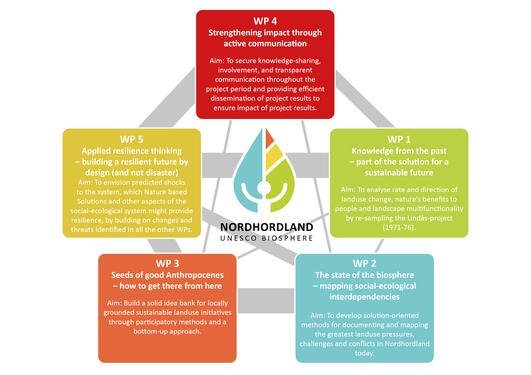Resilience Assessment in Alver
This autumn, the UNESCO Chair project BIOSPHERE are researching how Norwegian municipalities can work with the Global Biodiversity Framework, and use Alve – the biggest municipality of Nordhordland UNESCO Biosphere – as an example. They held their first of three meetings about this in September.

Main content
Together with Nordhordland UNESCO Biosphere and Alver municipality, the UNESCO Chair group has initiated a series of workshops where the focus is biodiversity and how cooperation between planning work, agriculture, business development, outdoor recreation and other relevant areas related to municipal work and decision making affect sustainable development and the future Alver. Employees from different departments in Alver municipality is partaking in the workshops, as well as other relevant stakeholders, such as leaders of farmer’s unions and ecologists.
The assessment is led be postdoctoral researcher Katja Malmborg and PhD candidate Ieva-Rozite Arina. During the first meeting, the participants where introduced to the project background, Nordhordland UNESCO Biosphere, and the Global Biodoversity Framework (GBF) and its goals. The participants were asked to reflect upon how they work with the different GBF goals – directly or indirectly – in their occupation or through their role, and then assess the importance of the different goals in the context of Alver municipality.

After reviewing everyone’s ranking of the GBF goals, the participants had to agree on which goals are most important in Alver municipality – meaning goals that are both a large challenge or problem in Alver, but simultaneously are goals that the municipality has an opportunity to work with or have an impact on. The following goals were chosen, and will be the focus of the next meeting:
- Biodiverstiy-inclusive spatial planning, "near-0 loss" + Mainstream biodiversity into all policy/practice
- Reduce climate change impacts
- Sustainable agriculture, aquaculture, fisheries and forestry
- Strengthen capacity, access to and cooperation within technology and science
- Effectively restore 30% of degraded nature
- Effectively conserve 30% of lands and seas
- Sustainable consumption, half food waste
When the participants had agreed upon these goals, they were asked to identify existing data and available information that can be used to strengthen these goals, and also what information or data those working with these matters are missing. Then it will be up to the scientists to map available information, and to suggest how science can contribute to complement the source data and close the knowledge gaps. The researchers will present their findings in the next meeting in November. During that meeting, participants will start working more with their chosen GBF goals.
